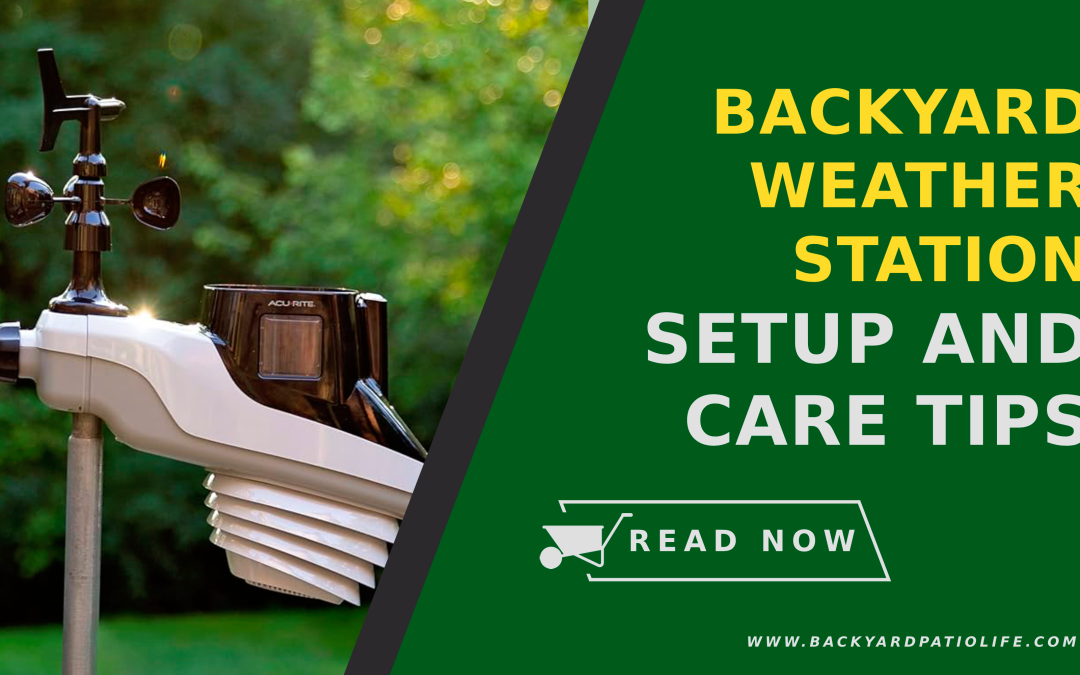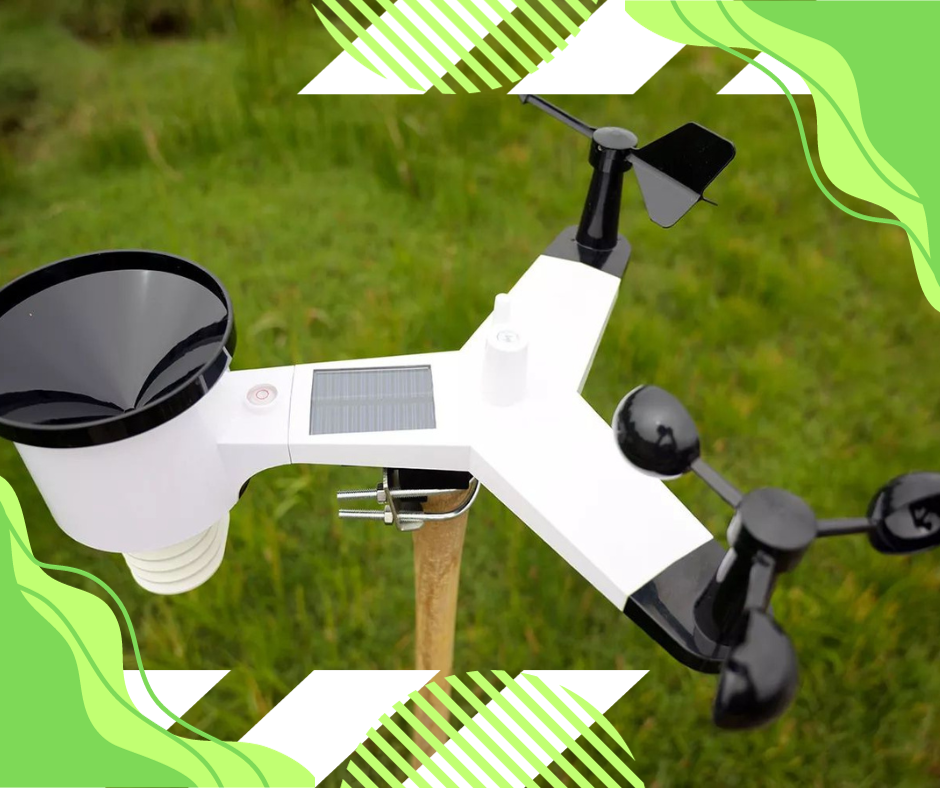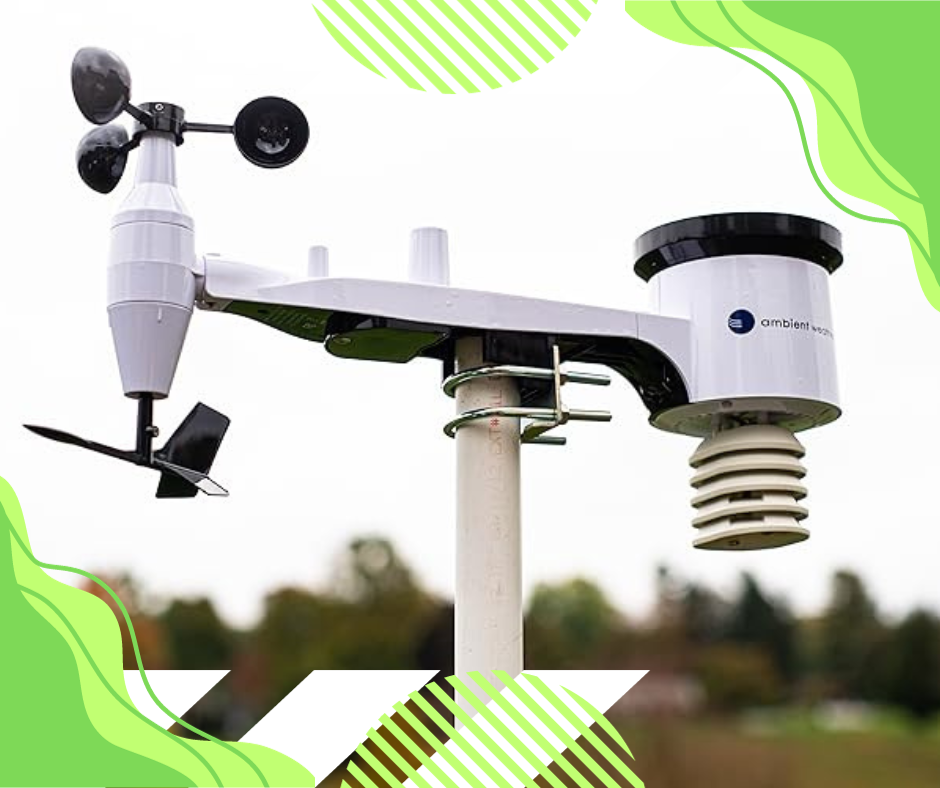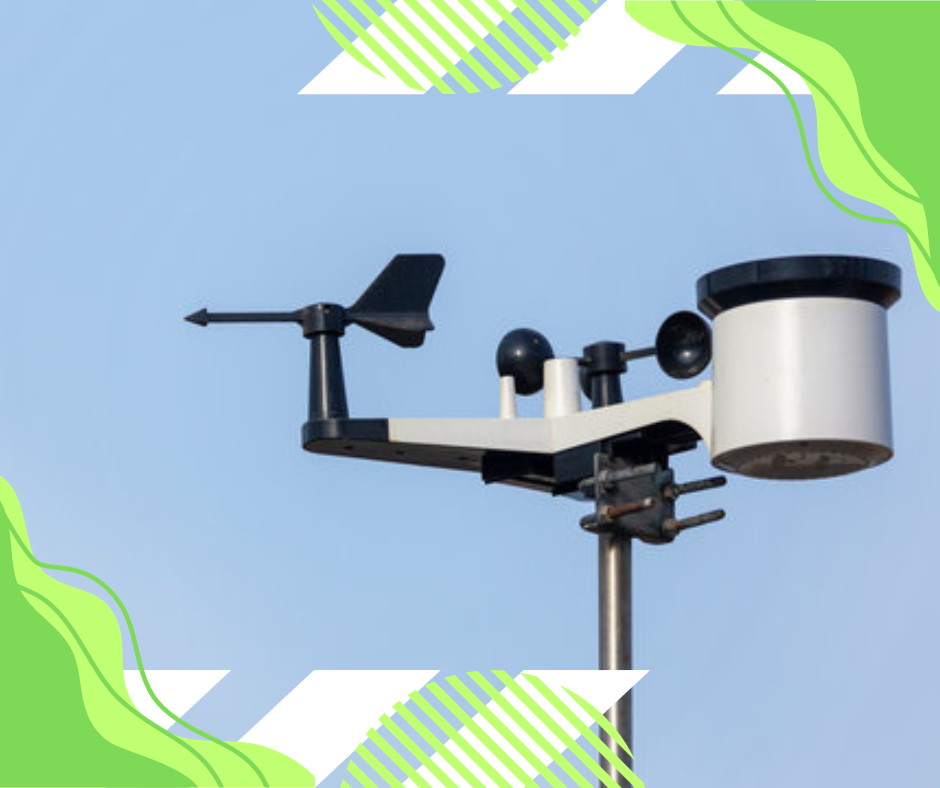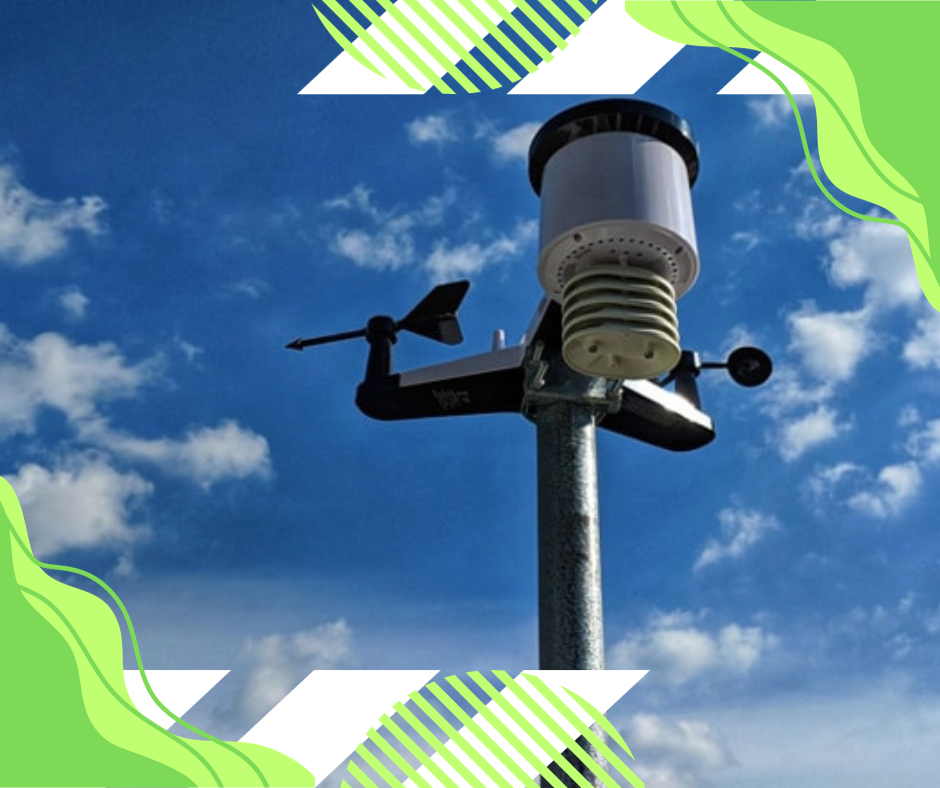==================
A Caveat and Affiliates
First off, a little caveat: within my articles you will find affiliate links, meaning if you buy them, I get a small commission. Your cost is not affected. In addition, I am an Amazon Associate and I earn from qualifying purchases on Amazon.
And yes, if I say that I recommend a product here, it means I truly believe it is a good product. I refuse to recommend any product that I have not researched and believe to be a good value.
Even better, I provide you with a very clear picture of the product, it’s use, and the probable value.
Earning your trust is important to me. I run this website myself and the commissions and donations help support the site.
Sound reasonable and fair enough? Let’s continue to the article.
==================
Did you notice how the weather can change your day? Now, imagine having that power in your own backyard. A backyard weather station setup is not just a hobby. It’s a way to understand the environment you live in. In this article, we’ll provide you with effective ways to set up and maintain a backyard weather station. Whether you’re a budding meteorologist or just intrigued by the changing skies, we have the insights you need. We’ve got you covered, from selecting the right equipment to maintenance tips. Keep reading to unlock the full potential of your personal meteorological gadget!
Credits: @GardenerScott
Backyard Weather Station Setup and Care Tips:
Your Guide to Precision Climate Monitoring
Setting up a backyard weather station can be rewarding for weather enthusiasts and homeowners seeking to optimize their gardens or outdoor spaces. By gathering hyper-local weather data, you’re able to monitor conditions that affect your immediate environment. Whether you’re aiming for a simple setup to check temperature and humidity or a sophisticated system that measures wind speed and rainfall, the key is to select the right equipment that fits your specific needs. A properly installed and maintained weather station offers personal satisfaction and contributes valuable data to the larger meteorological community.
Care and maintenance are just as crucial as the initial setup of your backyard weather station. Regular checks and cleaning of sensors are necessary to ensure accurate readings. Additionally, staying informed about common issues and knowing how to troubleshoot them will keep your weather station running efficiently. With the advent of smart technology, connecting your weather station to various networks allows for real-time monitoring and sharing of your weather data with a broader audience, enhancing both personal and community weather preparedness.
Key Takeaways
- Selecting the right weather station ensures tailored data collection for your particular needs.
- Regular maintenance is vital for the longevity and accuracy of your weather station.
- Connecting your station to networks enhances data utility and sharing capabilities.
Choosing the Right Weather Station
Selecting a weather station for your backyard involves understanding the different types of stations available, their essential features, and your budget constraints.
Weather Station Types
There are primarily two kinds of weather stations: analog and digital. Analog weather stations offer basic functions and typically require manual reading. On the other hand, digital weather stations provide you with more advanced features, such as wireless data transmission and smartphone compatibility.
Key Features to Consider
When choosing a weather station, consider the following features:
- Ease of Installation – Your station should be simple to set up. Weather Underground’s installation guide is a helpful reference.
- Data Accuracy and Sensors – Look for a station with necessary temperature, humidity, rainfall, and wind speed sensors.
- Connectivity – Options like Wi-Fi or RF transmission enable you to monitor your station remotely.
- Durability – Ensure the equipment is weather-resistant and capable of withstanding local environmental conditions.
Budget Considerations
- Entry-Level Stations – Generally cost-effective, suitable for basic weather tracking.
- Mid-Range Stations – Offer additional features like smartphone connectivity, better accuracy, and durability without a hefty price tag.
- High-End Stations – These provide the most precise data and robust build quality for serious weather enthusiasts but come at a premium.
Installation Guide
Your backyard weather station setup requires precision and attention to detail to ensure accurate readings and optimal performance.
Selecting the Location
Your weather station’s accuracy heavily depends on its location. You want to find a spot that is away from obstructions like trees or buildings that could interfere with wind and rain measurements. It’s important to install your weather station at a height of about 4-6 feet above the ground for temperature readings, whereas wind sensors should be mounted 8-10 feet above the highest point of your roof.
Mounting Equipment
When mounting your sensors, use brackets and mounting hardware that come with your weather station or ones that the manufacturer recommends. For example, to set up an AcuRite weather station, ensure that the outdoor sensors are securely attached to prevent any movement caused by wind or adverse weather conditions.
Ensuring Stability
Stabilize your equipment to avoid data errors caused by vibrations or sway. One way to reinforce stability is to use guy wires or additional supports if the weather station is installed on a pole. Your equipment should remain as stationary as possible to maintain consistent and reliable readings.
Connecting to Networks
Ensuring your backyard weather station setup is properly connected to networks is critical for accurate data collection and remote access to weather readings. Here’s how you can set up these connections effectively.
Wi-Fi and Internet
Your weather station should connect to your home Wi-Fi network to transmit data to the internet. This allows for real-time access to weather information from any location. To connect:
- Turn on your weather station and navigate to the network settings.
- Select your home Wi-Fi and enter the password when prompted.
- Confirm that the connection is successful; your station may indicate this with a light or on its digital display.
For accurate weather data reporting, the placement of your weather station is important. It should be positioned within a reliable range of your Wi-Fi router to maintain a strong connection. Follow the guidelines on How to Set Up a Personal Weather Station – Lifewire for best placement practices.
Data Logging and Software Setup
Once connected to Wi-Fi, configure data logging and software setup:
- Install the weather station manufacturer’s software on your computer or smart device.
- Create a data logging schedule within the software to record weather readings automatically at your preferred intervals.
- Ensure the settings allow for data storage and backup to prevent data loss.
Remember, proper configuration of your software is essential for analyzing historical data and identifying weather trends. Detailed instructions for your specific model can expediently guide you through this process, as seen on Detailed Walkthrough of Initial Setup – WeatherFlow Support.
Maintenance Routines
Regularly scheduled maintenance is essential to keep your backyard weather station accurate and extend its lifespan. This includes cleaning components, managing power sources, and safeguarding the equipment from harsh conditions.
Frequency: Every 6 months
Tools: Soft brush, damp cloth, mild soap (optional)
Ensure your weather station’s accuracy by periodically cleaning its sensors. Dust and debris can lead to erroneous readings, so a gentle wipe with a soft brush or damp cloth is recommended. For stubborn grime, a touch of mild soap followed by a rinse with water can be effective, remembering weather station maintenance guidelines. After cleaning, allow the sensors to air dry completely before reactivating the station.
Battery Care
Type: Lithium or alkaline batteries
Replacement: As needed or per manufacturer’s recommendation
Your weather station’s batteries are its lifeline. Check their status semi-annually and replace them with the recommended type, either lithium or alkaline. They ensure better performance in varying temperatures. Keeping a spare set on hand means you can replace them promptly when necessary. It’s also worth noting that AcuRite provides specific guidance for battery maintenance in their models.
Protecting From Extreme Weather
Strategy: Proper siting, shielding
Your weather station’s longevity depends on its protection from extreme weather conditions. Place it in a location where it can be naturally sheltered yet still have exposure for accurate measurements. In case of harsh weather, additional covers or shields can be utilized without obstructing the sensors. Always ensure there is no water accumulation around the components. Additional tips on optimizing your weather station’s siting can be found through a resource on how to best position your weather station.
Troubleshooting Common Issues
You may encounter a few technical difficulties when setting up and caring for your backyard weather station. This section guides you through resolving common issues such as connectivity problems, sensor inaccuracies, and firmware updates, ensuring your weather station functions optimally.
Connectivity Problems
If your weather station is experiencing connectivity issues, first check that the sensors are within the recommended range of the display console. Interference from walls and other electronic devices can inhibit signal strength. In cases where the signal is weak or intermittent, consider repositioning the station or the sensors to minimize obstacles. Ensure the station is not near devices that could cause interference, like microwaves or wireless routers.
Sensor Inaccuracies
Accuracy is crucial for reliable weather data. If you notice temperature or humidity discrepancies, ensure your sensors are placed in their ideal locations. They should be away from direct sunlight and reflective surfaces that could skew the measurements. Regular maintenance and calibration are necessary to provide precise readings consistently. Clean the sensors periodically and recalibrate them according to the manufacturer’s instructions.
Firmware Updates
Keeping your weather station’s firmware up-to-date is important for accurate data collection and improved functionality. Check the manufacturer’s website for the latest firmware updates. If an update is available, follow their instructions carefully. These updates may fix existing bugs and improve the overall performance of your weather station. If possible, remember to back up your historical data before proceeding with the update to prevent data loss.
Enhancing Weather Station Accuracy
Accurate weather data depends on precise calibration, strategic placement, and, when necessary, selecting the right hardware upgrades for your backyard weather station.
Calibration Procedures
Regular calibration is essential to ensure that your weather station provides reliable readings. Calibrate your weather station by comparing its readings with those of trusted instruments. Your station’s thermometer, hygrometer, anemometer, rain gauge, and barometer each have specific calibration steps that should be followed meticulously to maintain accuracy.
Environmental Considerations
The environment surrounding your weather station significantly influences its measurements. Installation height is crucial. To minimize wind and rain obstructions, install the weather station above the roofline, ideally at 8 to 10 feet. When prioritizing temperature and humidity, placing the sensor 4 to 6 feet off the ground is usually adequate.
Hardware Upgrades
If you notice persistent inaccuracies or equipment failures, consider hardware upgrades. Technology advancements can offer more precise sensors or durable materials to withstand environmental factors better. It’s important to select compatible components that integrate smoothly with your existing system, enhancing overall precision.
Data Analysis and Sharing
Once your personal weather station is up and running, it’s crucial to understand the data you’re collecting and how to share it effectively. This enhances your weather prediction capabilities and contributes to a larger community database.
Interpreting Recorded Data
To interpret your weather station’s data, familiarize yourself with terms like temperature trends, humidity levels, and barometric pressure changes. Temperature trends can indicate heatwaves or cold fronts, while fluctuations in humidity levels might suggest incoming rainy weather. Understanding barometric pressure changes helps predict storm systems. Regularly analyzing this data improves your forecasting accuracy over time.
Sharing Data with the Community
Your weather data can be invaluable to local meteorologists and fellow enthusiasts. By sharing your data with weather databases like Weather Underground, you contribute to real-time weather modeling. Ensure your data is accurate by performing regular maintenance checks on your station for precise community contribution.
Using Data for Home Automation
Integrate your weather station data into your home automation system to create a responsive environment. For example, connect temperature data to your thermostat for efficient heating and cooling. Utilize wind speed measurements to automate awnings or window shutters, protecting your home during high-wind conditions. This integration provides practical applications for your collected data, enhancing home efficiency and comfort.
Wrapping It Up
Isn’t it thrilling to predict the weather in your own backyard? As you watch the skies and learn from your backyard weather station setup, remember that each day brings a new discovery. And as you gather more weather insights, why not share them? Join our community of backyard explorers. Let’s share our weather stories and learn together. Are you ready to become a local weather expert? Share your journey and inspire others!
Frequently Asked Questions
How do I correctly mount my weather station for accurate readings?
Your weather station should be mounted at the recommended height, free from obstructions. For example, mounting it 8-to-10 feet above the roofline can yield optimal wind measurements while ensuring it’s away from heat sources for accurate temperature readings.
What maintenance is required to keep a weather station operating effectively?
Regular maintenance, such as cleaning and inspection of sensors, is crucial for longevity and accuracy. Per the manufacturer’s guidelines, it’s also important to perform maintenance specific to your weather station’s model.
What factors should I consider when choosing a location for my weather sensor?
The location of your sensor dictates the accuracy of the data. Ensure it’s placed away from artificial heat sources, not blocked by trees or buildings, and mounted at the correct height to prevent data distortion.
How can I troubleshoot connectivity issues with Weather Underground?
Check your internet connection and ensure that your weather station is compatible with the Weather Underground platform. Detailed instructions and support can often be found in the installation guide provided by Weather Underground.
Is it better to place a weather station sensor in the sun or shade, and why?
Place your weather station sensor in a location with a natural balance of sun and shade over the day. Excessive sunlight can lead to overheated sensors and inaccurate temperature readings, while too much shade can skew the humidity data.
What guidelines should be followed when installing a weather station to ensure data accuracy?
Follow the manufacturer’s guidelines for installation and consider environmental factors such as buildings, trees, and bodies of water that could influence readings. Setup elements, such as connecting the wind cups to the anemometer, should be done carefully to ensure the sensor’s open exposure to natural conditions.
Elevate Your Backyard Life With Us!
Discover the precision, insights, and fascination that come with owning a backyard weather station and more. Embrace the excitement and discovery that awaits you in your own backyard! Follow us on Facebook, Instagram, and Twitter, and let’s share our weather observations and experiences!
Facebook: https://www.facebook.com/BackYardWeatherWatchers/
Instagram: http://instagram.com/backyardweather_enthusiasts
Twitter: https://twitter.com/weatherbackyard
Let’s have the best backyard experience together!
